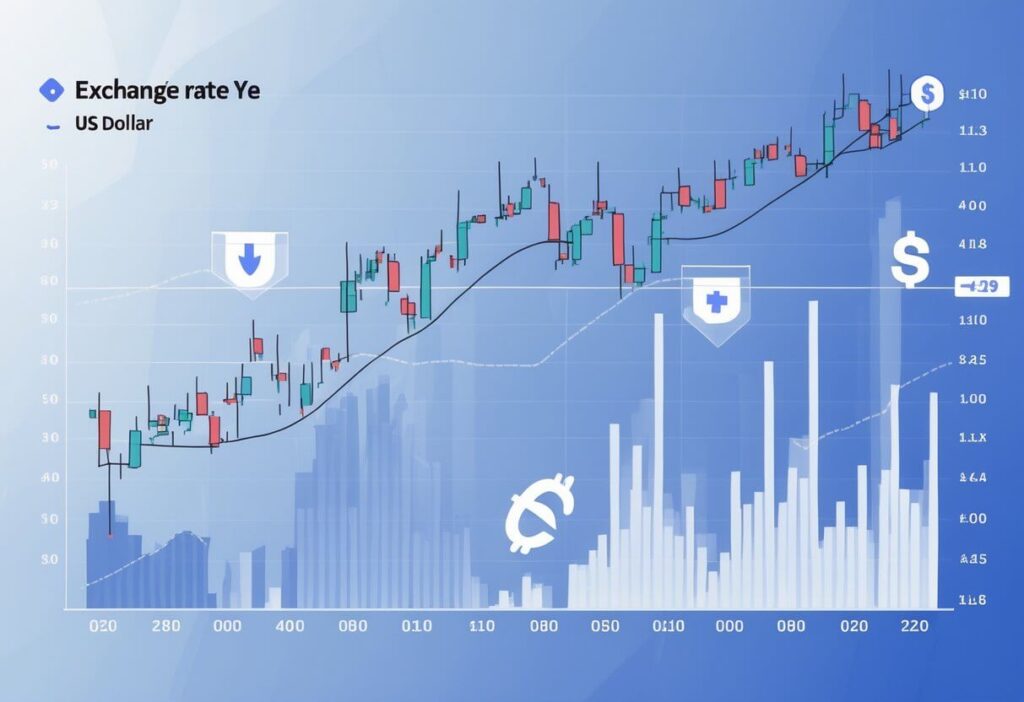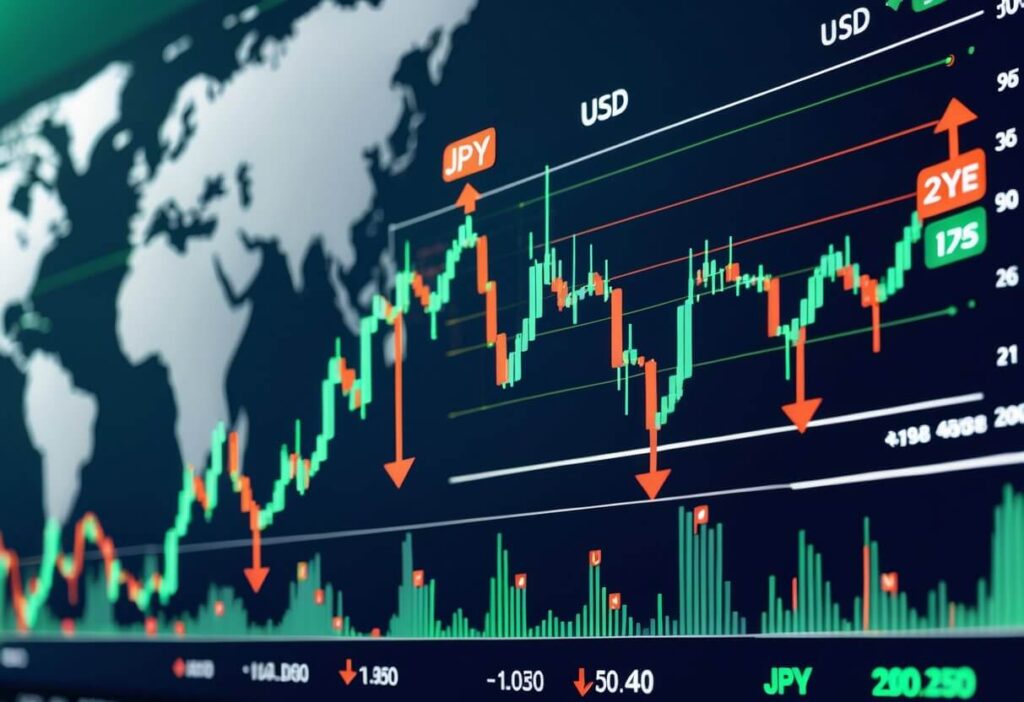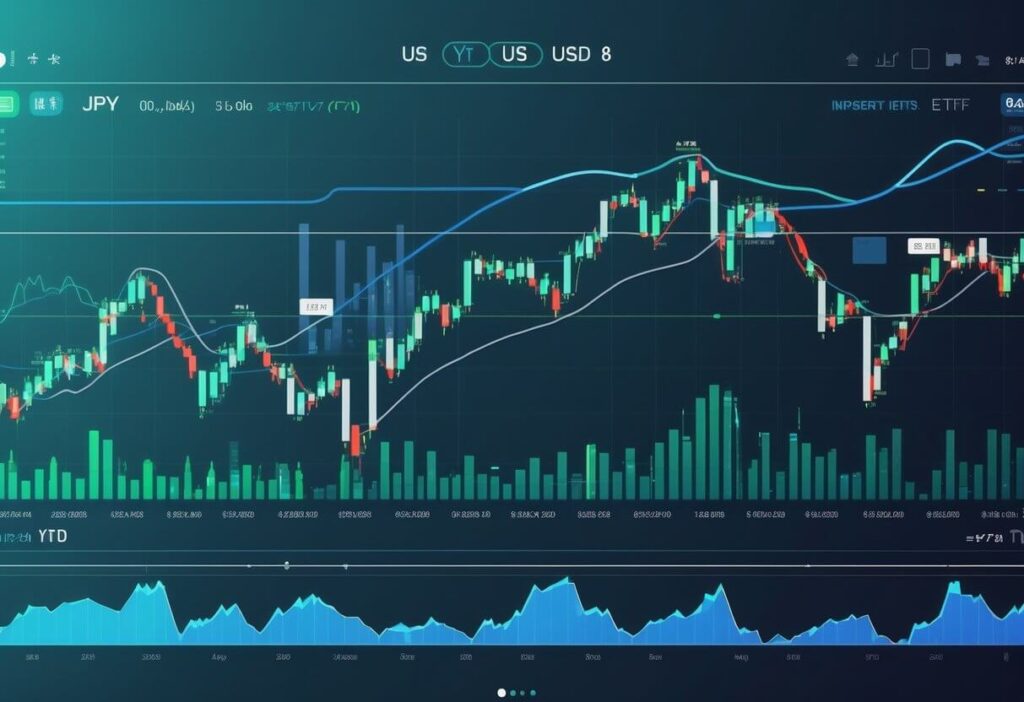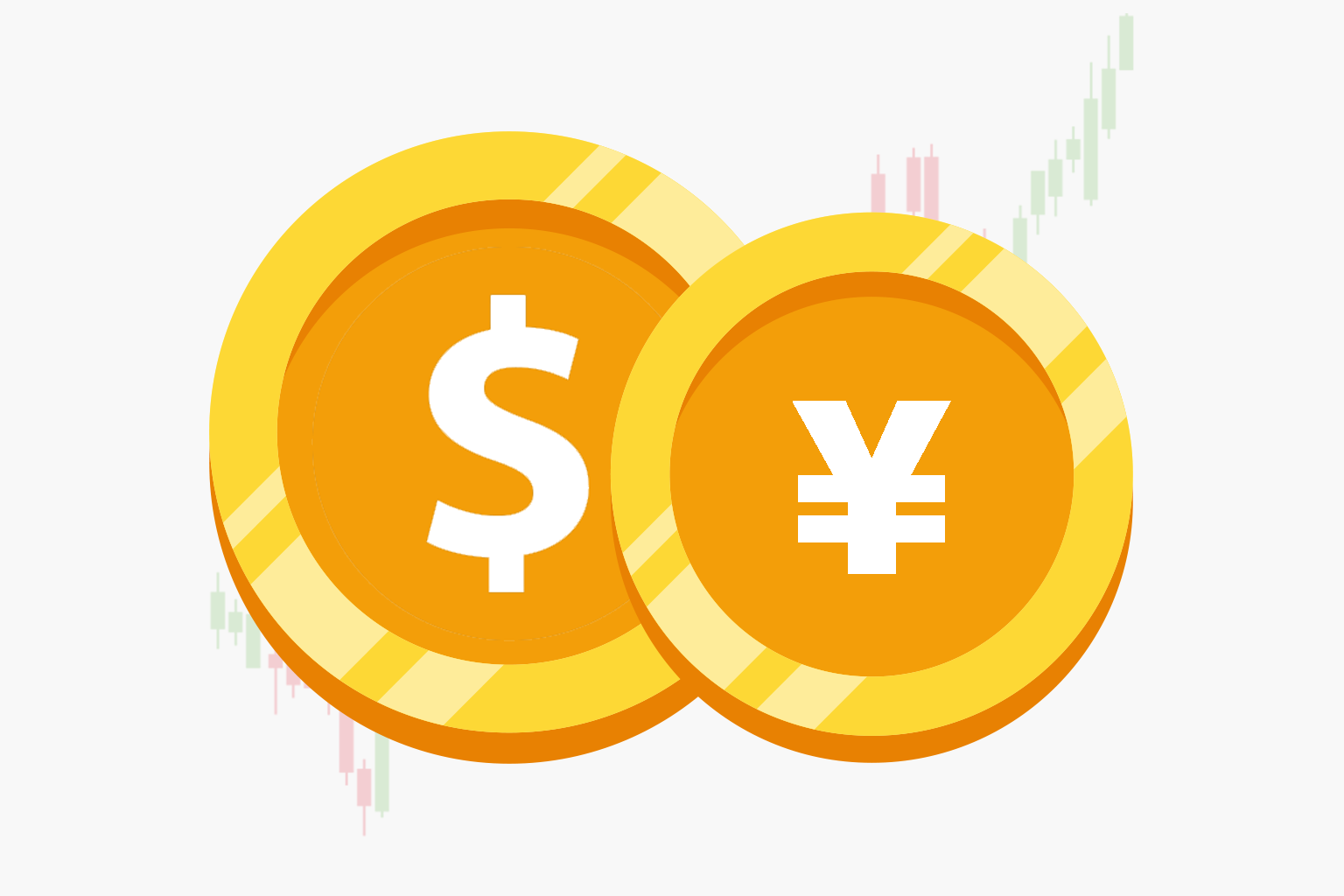The JPY/USD currency pair represents one of the most actively traded exchange rates in the global forex market, showing how many Japanese yen are needed to purchase one US dollar. This pair currently fluctuates based on economic policies from both the Federal Reserve and Bank of Japan, along with market sentiment toward safe-haven assets during times of uncertainty.

I’ve structured this analysis to give you comprehensive insights into JPY/USD pricing dynamics. You’ll find real-time rate data alongside the fundamental and technical factors that drive daily movements in this major currency pair.
Understanding JPY/USD requires looking beyond simple price quotes to examine live exchange rate data, trading patterns, and the economic forces that influence both economies. My breakdown covers everything from current market drivers to practical trading considerations that impact this essential currency relationship.
Live JPY/USD Price & Change

The JPY/USD currency pair shows current exchange rates and price movements throughout trading sessions. Real-time data reveals how many US dollars one Japanese yen equals, with intraday fluctuations reflecting market conditions and longer-term trends visible in historical charts.
Intraday Chart (1 Day)
I track the live JPY/USD exchange rate throughout each trading day to monitor price changes and volatility patterns. The intraday chart displays minute-by-minute price movements that help identify short-term trends.
Current market data shows the JPY to USD conversion rate fluctuating based on economic news and trading volume. I observe that the exchange rate typically moves within specific ranges during Asian, European, and American trading sessions.
Key intraday factors include:
- Economic announcements from Japan and the United States
- Central bank policy statements
- Market sentiment shifts
- Trading volume changes
The USD/JPY live chart updates automatically throughout the day. I notice that volatility often increases during overlapping trading sessions when both Japanese and American markets are active.
Historical Chart (1 Year)
I analyze the one-year JPY/USD historical chart to identify long-term trends and seasonal patterns in this currency pair. The Japanese yen to US dollar exchange rate shows significant movements over extended periods.
Historical data reveals how monetary policy decisions, economic indicators, and geopolitical events impact the JPY to USD conversion rate. I examine monthly and quarterly patterns to understand cyclical behaviors.
Major yearly influences include:
- Federal Reserve interest rate decisions
- Bank of Japan policy changes
- Economic growth data from both countries
- Global risk sentiment shifts
The yearly chart helps me identify support and resistance levels that traders watch closely. I observe that the currency pair often responds to seasonal factors like fiscal year-end flows from Japan and holiday trading periods.
Key Stats (Bullets)

The JPY/USD currency pair represents one of the most actively traded financial instruments in the global forex market. Based on the latest data, I can provide these essential statistics for traders and investors.
Current Market Position: • USD/JPY traded at 147.144 on Friday August 15th, decreasing 0.36% from the previous session • The pair lost 0.57% over the past four weeks • Annual performance shows a decline of 0.30% over 12 months
Price Forecasts: • End of Q3 2025: 149.269 projected price target • One-year outlook: 154.201 forecasted level • These projections come from global macro models and analyst expectations
Historical Range Data: • 2021 High: 115.52 • 2021 Low: 102.59
• Year-to-date High: 145.90 • Year-to-date Low: 113.47
The mid-market rate fluctuates throughout trading sessions based on market dynamics. I track these movements as they provide crucial insights for currency exchange decisions.
Technical Overview: The pair currently trades below its 20-day and 50-day moving averages, indicating the medium-term downtrend from January 2025 highs remains active according to technical analysis.
These statistics help me assess market sentiment and potential trading opportunities in this major currency pair.
Latest News & Drivers
Japan’s economy showed stronger-than-expected growth in Q2 2025, expanding 0.3% quarterly and 1.0% annualized. This beat consensus estimates and supports the Bank of Japan’s hawkish outlook.
I observe that financial markets are responding to diverging monetary policies. The Fed maintains a 90% probability of a 25 basis point cut in September, while Japan’s strong GDP data reinforces expectations for BoJ rate hikes.
Key Economic Indicators:
- Japan Q2 GDP: 1.0% annualized (vs 0.4% expected)
- US PPI July: 3.3% YoY (vs 2.5% expected)
- Fed rate cut probability: ~90% for September
Political events are creating additional volatility. US President Trump and Russian President Putin are scheduled to meet in Alaska to discuss ending the Ukraine conflict, which could influence safe-haven JPY demand.
I note that USD/JPY technical analysis shows the pair trading below 147.00 after rejection at 147.95. The bearish flag pattern suggests potential decline toward 146.25 support.
Upcoming Market Movers:
- US Retail Sales (monthly)
- Empire State Manufacturing Index
- University of Michigan Consumer Sentiment
- FOMC member speeches
Professional advice suggests monitoring these diverging central bank policies carefully. The BoJ’s hawkish stance contrasts sharply with Fed easing expectations, creating the primary driver for JPY strength against the dollar.
What Moves JPY/USD?
I observe several key factors that drive JPY/USD movements in the forex market. Central bank policies from both the Federal Reserve and Bank of Japan create the most significant price swings.
Interest rate differentials between the US and Japan heavily influence this currency pair. When the Fed raises rates while the Bank of Japan maintains accommodative policy, USD typically strengthens against JPY.
Economic data releases also impact prices:
- US employment reports
- Japanese inflation data
- GDP growth figures
- Manufacturing indicators
Risk appetite plays a crucial role in JPY/USD trading. During market uncertainty, investors often flee to the Japanese yen as a safe-haven asset, causing USD/JPY to decline.
Geopolitical events can trigger sudden moves. Trade tensions, political instability, or global crises typically strengthen the yen due to its safe-haven status.
I notice that traders engaged in forex trading on margin face amplified financial risks during volatile periods. Market sentiment shifts can cause rapid price changes, especially around major economic announcements.
Technical factors include:
- Support and resistance levels
- Moving averages
- Trading volume
- Chart patterns
Commodity prices, particularly oil, sometimes influence the pair indirectly through their impact on inflation expectations and monetary policy decisions.
Cross-currency flows from other major pairs like EUR/USD and GBP/USD can create secondary effects on JPY/USD pricing through arbitrage opportunities and portfolio rebalancing activities.
Trading Hours & Settlement

The JPY/USD futures market operates nearly around the clock to accommodate global trading demands. ICE Futures offers JPY/USD trading from 8:00 pm to 5:00 pm New York time, with Sunday evening sessions beginning at 6:00 pm.
I find the optimal trading window occurs between 12:00-15:00 GMT when market activity peaks. This timing captures maximum liquidity as both Asian and European sessions overlap.
Key Trading Windows:
- European traders: 7:00 AM – 4:00 PM GMT
- US traders: 12:00 PM – 8:00 PM GMT
- EST traders: 7:00 AM – 11:00 AM
Market makers provide continuous liquidity during these core hours. Their presence ensures tighter spreads and more efficient price discovery.
Settlement Specifications:
| Contract Detail | Specification |
|---|---|
| Contract Size | 12,500,000 Japanese yen |
| Final Settlement | Physical delivery on third Wednesday |
| Last Trading Day | 9:16 AM CT, two business days before expiry |
| Contract Months | March, June, September, December |
The minimum price fluctuation stands at $0.0000005 per yen, equaling $6.25 per contract. Physical settlement occurs on the third Wednesday of the expiring contract month.
I observe that the extended trading hours accommodate the global nature of USD/JPY transactions, which exceed $250 billion annually between the US and Japan.
Related Indices & ETFs

I can identify several investment vehicles that track JPY/USD movements and related Japanese market exposure. The most direct approach involves Japanese Yen ETFs that provide currency exposure without requiring forex accounts.
Currency ETF Options:
- Pure JPY exposure ETFs
- Leveraged and inverse JPY products
- Multi-currency funds with JPY allocation
These ETFs allow me to gain yen exposure through traditional brokerage accounts. I find this particularly useful for portfolio diversification without managing separate currency positions.
Japanese Market Indices:
The Nikkei 225 index shows positive correlation with yen movements since 2002. When the yen weakens (USD/JPY rises), Japanese stocks often benefit from improved export competitiveness.
Key Japanese equity indices include:
- Nikkei 225 – Large-cap benchmark
- TOPIX – Broader market representation
- JPX-Nikkei 400 – Quality-focused selection
ETF Structure Considerations:
I notice that JPY ETF rankings are updated weekly and include metrics like fund flows and expense ratios. These factors impact my investment decisions when selecting yen exposure vehicles.
Currency power rankings help me compare JPY ETFs against other currency investments. The calculations exclude inverse products, which I consider separately for hedging strategies.
Common Questions On JPY/USD Price Data
I frequently receive questions about JPY/USD price data mechanics, trading schedules, and direct investment access. These concerns typically center on data refresh frequencies, weekend market closures, and whether investors can directly trade the currency pair.
How Often Is The Price Updated?
I observe that JPY/USD price data updates continuously during active trading hours. The foreign exchange market operates 24 hours a day from Sunday evening to Friday evening EST.
Price updates occur in real-time, often multiple times per second during high-volume periods. Major trading sessions create the most frequent updates:
- Asian Session: 6 PM – 3 AM EST
- European Session: 2 AM – 11 AM EST
- North American Session: 8 AM – 5 PM EST
I notice the most rapid price movements during session overlaps. The Tokyo-London overlap and London-New York overlap generate particularly high update frequencies.
Data providers may show slight variations in timing. Some platforms display prices with minimal delays while others offer true real-time feeds for premium subscribers.
Why Doesn’t The Index Trade On Weekends?
I must clarify that JPY/USD represents a currency pair, not an index. The forex market closes over weekends because major financial institutions and central banks that facilitate currency trading operate on business schedules.
Weekend closures occur for practical reasons. Banks need time for settlement processes, system maintenance, and staff rest periods. Most institutional trading desks close Friday evening and reopen Sunday evening.
I observe that weekend gaps frequently appear between Friday’s closing price and Sunday’s opening price. These gaps reflect news events, economic developments, or geopolitical changes that occur during market closures.
Some brokers offer limited weekend trading with wider spreads and reduced liquidity. However, these represent a small fraction of normal market activity.
Can I Trade The Index Directly?
JPY/USD is a currency pair, not an index, and I can confirm that direct trading is possible through various methods. Most retail investors access this pair through forex brokers rather than traditional stock exchanges.
Direct Trading Options:
- Spot forex trading through retail brokers
- Currency futures contracts
- Exchange-traded funds focused on JPY/USD
- Options contracts on the currency pair
I recommend considering your investment objectives before choosing a trading method. Short-term traders often prefer spot forex for immediate execution. Long-term investors might select ETFs for simplified tax treatment.
Margin requirements vary significantly between brokers. I typically see leverage ratios ranging from 10:1 to 50:1 for retail accounts, depending on regulatory jurisdiction.
Technical analysis tools help traders identify entry and exit points. Moving averages and RSI indicators prove particularly useful for JPY/USD analysis.





